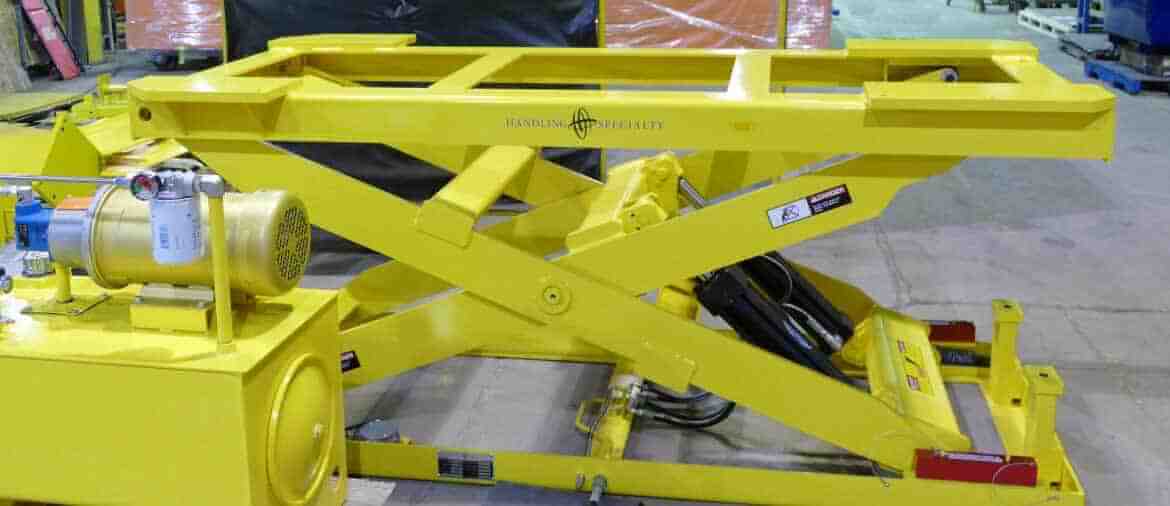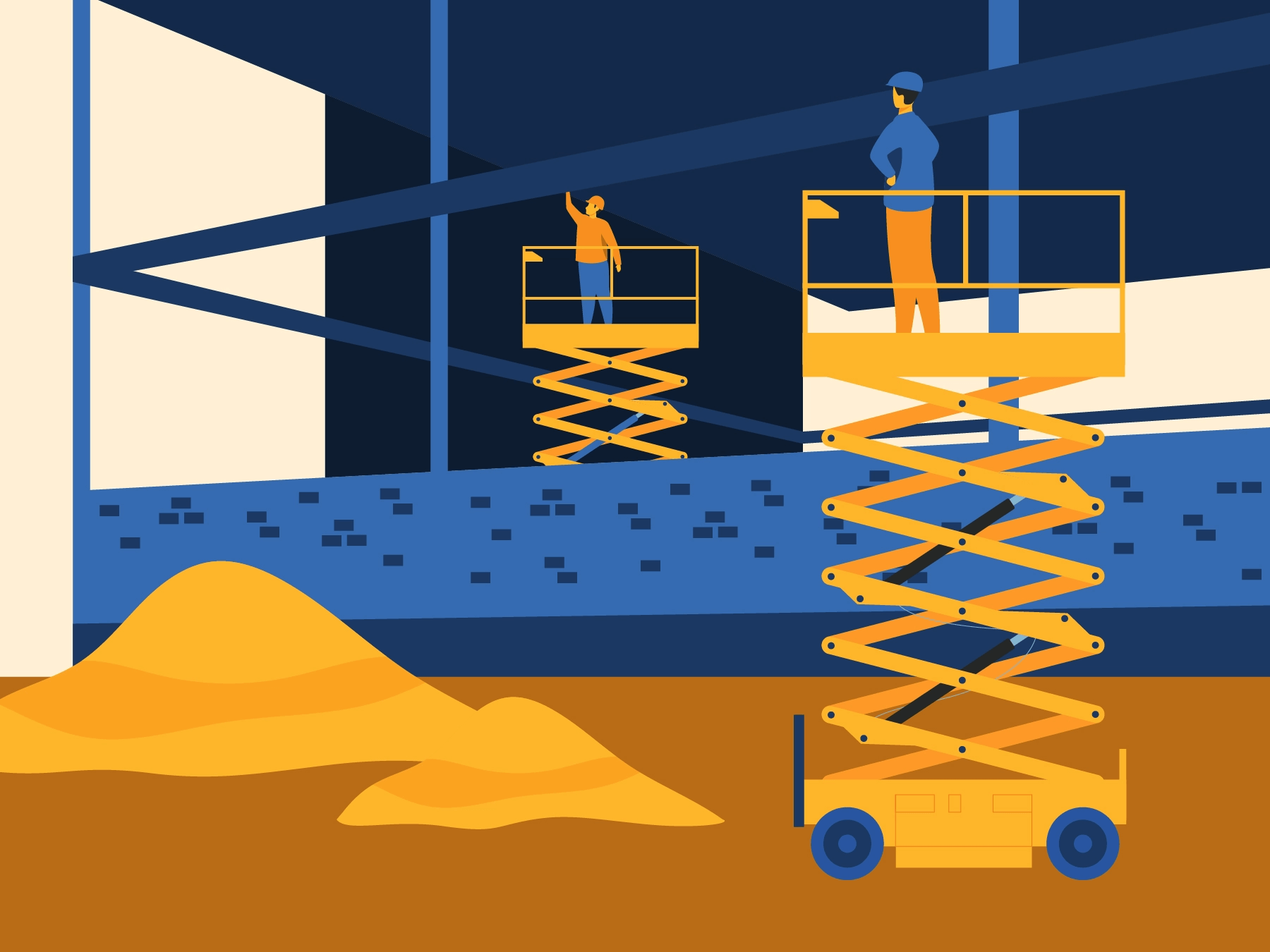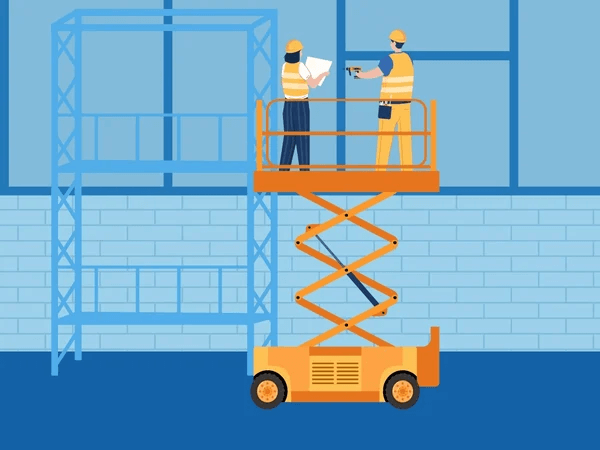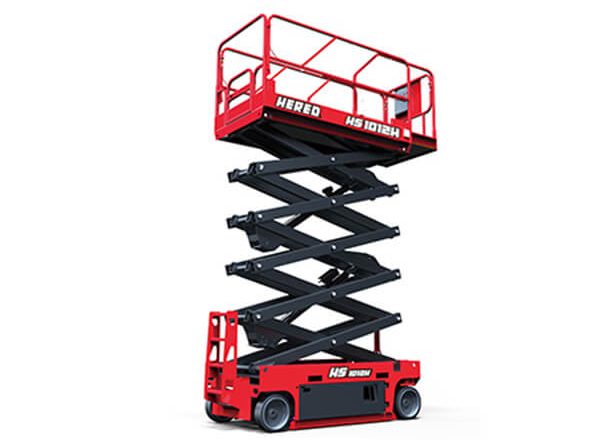Scissor lifts are essential tools in a variety of industries, offering a safe and efficient means of lifting people and materials vertically. These mobile devices are crucial for tasks that require access to heights, whether it’s construction, maintenance or events. Companies like Safest Lift offer scissor lift rentals in the UAE. In this comprehensive guide, we’ll look at the design and functionality of scissor lifts, review their different types and applications, and weigh up their advantages and disadvantages.
Design of a Scissor Lift
A scissor lift’s design is both robust and sophisticated, enabling it to handle heavy loads while ensuring safety and stability. The main elements of a scissor lift include:
1. Load Platform
The load platform is the top surface of the scissor lift where materials or personnel are placed. It is designed to be spacious and stable, providing a secure area for working or for transporting materials to various heights. Depending on the application, the platform may be equipped with guardrails, non-slip surfaces, and even foldable extensions to accommodate larger loads.
2. Scissor Lifting System
The core of the scissor lift is its scissor lifting system, a mechanism that consists of interlinked, folding supports in a crisscross pattern. This system is powered by hydraulic cylinders or pneumatic mechanisms, which enable the platform to move vertically. The scissor mechanism’s ability to extend and retract allows the lift to reach varying heights while maintaining stability.
3. Electrohydraulic Drive
The electrohydraulic drive is the powerhouse of the scissor lift. It consists of an electric motor and hydraulic pump that work together to move hydraulic fluid into the cylinders, thus actuating the scissor mechanism. This drive system is crucial for the smooth and controlled movement of the platform, whether it is ascending or descending.
4. Safety Frame
Safety is paramount in scissor lift design. The safety frame, often referred to as a “safety bar,” is a crucial feature that prevents accidents. If any object, person, or obstruction is detected under the platform, the safety frame automatically stops the hydraulic drive, halting the lift’s movement to prevent injury or damage.
5. Additional Safety and Functional Features
Modern scissor lifts are equipped with several additional features that enhance their functionality and safety. These may include:
Smooth Stop Mechanism: Ensures a gradual and controlled halt when the platform reaches the desired height.
Emergency Lowering System: Allows the platform to be safely lowered in case of a power failure or emergency.
Engine Overload Protection: Prevents the motor from overheating or becoming damaged due to excessive loads.
Height and Speed Adjustment: Enables operators to control the maximum height and speed of the platform to match specific job requirements.

Principle of Operation
Understanding the operation of a scissor lift is crucial for safe and efficient use. Here’s how it works:
1. Movement of the Platform
The scissor lift operates primarily through hydraulic or pneumatic systems. In a hydraulic scissor lift, a pump fills the hydraulic cylinders with oil (the working fluid). This pressurized fluid forces the scissor mechanism to extend, raising the platform. The scissor mechanism is designed to fold as the lift rises, creating the vertical movement necessary for elevation.
2. Supporting the Platform in the Raised Position
Once the platform reaches the desired height, it is supported by the hydraulic pressure within the cylinders. The platform remains stable due to a column of liquid held in place by a shut-off valve, ensuring that the lift does not descend unintentionally.
3. Lowering the Platform
To lower the platform, the shut-off valve at the bottom of the hydraulic cylinder is opened, allowing the hydraulic fluid to drain back into the reservoir. This action causes the scissor mechanism to contract, gradually lowering the platform. Typically, an electromagnetic valve controls this process, ensuring that the descent is smooth and controlled.

Types of Scissor Lifts
Scissor lifts can be categorized based on several characteristics, including mobility, drive type, and lifting mechanism.
1. By Mobility
Self-Propelled Scissor Lifts: These lifts are equipped with powerful engines that allow them to move independently around the worksite. They are highly versatile and can be used in large areas where mobility is essential.
Non-Self-Propelled Scissor Lifts: Lacking a traction engine, these lifts require manual control or additional equipment to move. They are typically used in smaller, confined spaces where frequent movement is not necessary.
2. By Drive Type
Electric Scissor Lifts: Powered by an electric motor and battery, these lifts are ideal for indoor use or in environments where emissions need to be minimized. They are quieter and more environmentally friendly compared to their diesel counterparts.
Diesel Scissor Lifts: With a higher lifting capacity and the ability to operate in more extreme conditions, diesel scissor lifts are suited for outdoor use, especially on rough terrains where more power is required.
3. By Lifting Mechanism
Hydraulic Scissor Lifts: These are the most common type, using liquid pressure (usually oil) to raise and lower the platform. They are known for their reliability and ease of maintenance.
Pneumatic Scissor Lifts: Instead of hydraulic fluid, these lifts use compressed air to operate. They are often used in environments where contamination from oil leaks is a concern, such as in food processing plants or clean rooms.

Applications of Scissor Lifts
Scissor lifts are versatile tools used across various industries. Here’s a look at some of their key applications:
1. Construction
In the construction industry, scissor lifts provide a safe and efficient means of transporting workers and materials to different heights. Whether it’s for installing building facades, laying electrical wiring, or working on roofing, scissor lifts are indispensable for tasks that require elevated access.
2. Warehousing and Logistics
Scissor lifts play a vital role in inventory management and loading/unloading operations in warehouses. They allow workers to easily access high shelves for stacking, retrieving, and organizing products, improving efficiency and safety in material handling.
3. Facility Maintenance
From replacing lighting fixtures to washing windows, scissor lifts are widely used in facility maintenance. They offer a stable platform for technicians to perform repairs and maintenance tasks at height, reducing the risks associated with ladders or scaffolding.
4. Event and Film Industry
In the event and film industry, scissor lifts are used to set up stages, install lighting and sound systems, and provide a stable platform for camera operators or technicians. Their ability to quickly move to different heights makes them ideal for dynamic production environments.
5. Emergency Response
Scissor lifts can be invaluable in disaster response scenarios, providing access to hard-to-reach areas during search and rescue operations. Their ability to navigate through debris and rubble while lifting personnel to significant heights is crucial in such situations.
Advantages of Scissor Lifts
Scissor lifts offer numerous advantages, making them a preferred choice for various industries:
1. Safety
Scissor lifts provide a stable and secure platform, minimizing the risk of falls or accidents. Safety features such as guardrails, emergency stop mechanisms, and overload protection further enhance their safety profile.
2. Efficiency
The ability to quickly ascend and descend, along with easy mobility around the worksite, makes scissor lifts highly efficient. They significantly reduce the time and effort required to perform tasks at height, improving overall productivity.
3. Versatility
Scissor lifts are suitable for a wide range of applications, from construction and maintenance to event setup and logistics. Their adaptability makes them a valuable tool in any industry that requires vertical elevation.
4. Reduced Personnel Fatigue
By eliminating the need for ladders or scaffolding, scissor lifts reduce the physical strain on workers. This not only improves worker comfort but also reduces the risk of fatigue-related accidents.
5. Compactness and Maneuverability
Many scissor lifts are designed to be compact and maneuverable, making them ideal for use in confined spaces. Their ability to navigate tight areas while still providing significant height access is a major advantage.
6. Wide Range of Models
The market offers a wide variety of scissor lift models, allowing businesses to choose a lift that best suits their technical requirements and budget. Whether you need a small, electric lift for indoor use or a heavy-duty diesel lift for outdoor construction, there is a scissor lift available to meet your needs.
Disadvantages of Scissor Lifts
Despite their many advantages, scissor lifts do have some limitations:
1. High Cost
The cost of purchasing or renting a scissor lift can be significant, particularly for smaller companies. Maintenance and repair costs can also add to the overall expense, making it a considerable investment.
2. Limited Maneuverability
While scissor lifts are generally mobile, their maneuverability is limited compared to other lifting devices like boom lifts. They may not be suitable for very tight spaces or uneven surfaces where more flexible equipment is needed.
3. Regular Maintenance Requirements
Scissor lifts require regular maintenance to ensure they operate safely and efficiently. This includes checking the hydraulic system, inspecting safety features, and performing routine repairs. Maintenance can be costly and time-consuming, particularly for older models.
4. Difficult Access to Some Parts of the Bottom
In some scenarios, accessing certain components at the bottom of the scissor lift can be challenging. This is particularly true if the lift is not designed with a pre-planned recess, making it difficult to perform maintenance or repairs without specialized tools or techniques.
Advantages of Renting Scissor Lifts
For companies that do not require a scissor lift on a regular basis, renting can be a cost-effective alternative to purchasing. Renting offers several benefits:
1. Cost Savings
Renting a scissor lift eliminates the need for a significant upfront investment. It also allows businesses to avoid the ongoing costs of maintenance, storage, and depreciation.
2. Flexibility
Renting provides flexibility, allowing companies to choose the right scissor lift for specific projects without being tied to a single model. This is particularly advantageous for businesses with varying project requirements.
3. Access to the Latest Models
Rental companies often provide access to the latest models of scissor lifts, ensuring that businesses can benefit from the most advanced technology without the need for frequent upgrades.
4. Reduced Responsibility
When renting, the responsibility for maintenance and repairs typically falls on the rental company. This reduces the burden on the user, allowing them to focus on their core business activities.
Scissor Lift Rental in UAE
Safest Lift, a leader in crane and scissor lift rentals in Dubai and the UAE, exemplifies these benefits by offering top-quality equipment at competitive prices. Their commitment to safety, service, and customer satisfaction makes them an ideal partner for businesses looking to optimize their operations with the right scissor lift solution. Whether for a short-term project or ongoing needs, renting a scissor lift can be a smart, strategic choice that enhances efficiency, safety, and profitability.
Conclusion
Scissor lifts are versatile, efficient, and safe devices that play a crucial role in a wide range of industries. From construction and maintenance to logistics and emergency response, these lifts provide a reliable means of accessing elevated areas. While they come with certain costs and limitations, their benefits often outweigh the drawbacks, especially when the option to rent is considered. Whether for short-term projects or long-term use, scissor lifts remain an essential tool for modern industry.

He brings a blazing critical intelligence to bear as well as novelistic skills in assembling a great life of a great writer.
